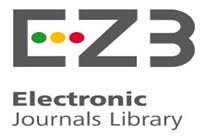IJSEA Archive (Volume 2, Issue 1)
International Journal of Science and Engineering Applications (IJSEA) (Volume 2, Issue 1 - January 2013)
Development and testing of natural draught desert cooler
Keywords: Desert cooler, natural draught, cellulose cooler pads, air retainers.
To save the environment it is primarily required to save electricity. Since, generation of electricity add pollutants to the
environment. The developed desert cooler which is described in this paper uses naturally blowing air to provide the cooling
effect. It allows air to enter inside the cooler from four sides while allows outgoing of air only through a passage in bottom. Thus
naturally blown air is circulated inside the room through desert cooler, which requires no electricity to blow the air as in
conventional desert coolers. The paper describes the methods of designing and manufacturing of this desert cooler. A test setup is
presented which was prepared to test the effectiveness of this developed cooler. The methodology of testing and test data are also
presented. The results show that this device is effective in providing cooling without using electricity for blowing the air.
[1] Al-Sulaiman, F. 2002. Evaluation of the performance of
local fibers in evaporative cooling. Energy Conversion and
Management. 43(16), 2267-2273.
[2] Kothare, C. B. and Borkar, N. B. 2011. Modified desert
cooler (MDC). International Journal of Engineering and
Technology. 3 (2), 166-172.
[3] Poonia M.P., Bhardwaj A., Upender P., Jethoo A.S. 2011.
Design and development of energy efficient multi-utility
desert cooler. Universal Journal of Environmental Research
and Technology. 1, 39-44.
[4] Khond, V. W. 2011. Experimental investigation of desert
cooler performance using four different cooling pad
materials. American Journal of Scientific and Industrial
Research. 418-421.
[5] Erens, P. J. and Dreyer, A. A. 1993. Modeling of indirect
evaporative coolers. International Journal of Heat and Mass
Transfer. 36 (1), 17-26.
[6] Guo, X. C. and Zhao, T. S. 1998. A parametric study of an
indirect evaporative air cooler. Heat and Mass Transfer. 25
(2), 217-226.
[7] Ren, C. and Yang, H. 2006. An analytical model for the
heat and mass transfer processes in indirect evaporative
cooling with parallel / counter flow configurations.
International Journal of Heat and Mass Transfer. 49, 617-
627.
[8] Gilani, N. and Shariaty-Niassar, M. 2009. An investigation
of indirect evaporative coolers (IEC) with respect to
thermal comfort criteria. Iranian Journal of Chemical
Engineering. 6(2), 14-28.
[9] Navon, R. and Arkin, H. 1994. Feasibility of direct indirect
evaporative cooling for residences, based on studies with a
desert cooler. Building and Environment, 29 (3), 393-399.
[10] Amr Sayed, H., Hiroshi, Y., Abdelsamei Eid, M. and
Magdy, M. R. 2012. Indoor natural ventilation using
evaporating cooling strategies in the Egyptian housing: A
review and new approach. International Journal of
Engineering and Technology. 4(3), 229-233.
@article{ashok02011004,
title = "Development and testing of natural draught desert cooler ",
journal = "International Journal of Science and Engineering Applications (IJSEA)",
volume = "2",
number = "1",
pages = "19 - 22",
year = "2013",
author = "Ashok Kumar Sharma, Pawan Bishnoi ",
}










